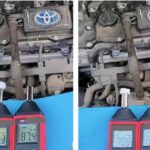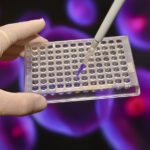
In the ever-evolving landscape of esophageal surgery, one of the most persistent and daunting complications is the development of an anastomotic fistula following esophagectomy. This pathological connection between the esophageal lumen and adjacent tissues can lead to serious morbidity and adversely affect patient outcomes. Despite advances in surgical techniques and perioperative care, the incidence of anastomotic fistula remains a significant clinical hurdle. Addressing this challenge requires novel strategies that go beyond conventional suturing methods to promote robust tissue healing and biomechanical stability at the anastomotic site.
Recent strides in biomaterials and regenerative medicine have opened an exciting frontier in surgical innovation. Among these advances is the utilization of hydrogel-based biomaterial patches as reinforcement scaffolds that integrate biological cues to accelerate tissue regeneration. A cutting-edge experimental study recently published in the Journal of Thoracic Disease explores an innovative approach applying a hyaluronic acid methacrylate (HAMA) hydrogel patch system locally loaded with basic fibroblast growth factor (bFGF) to enhance esophageal anastomotic healing. This approach leverages the sustained release capacity of hydrogels to maintain a therapeutic milieu conducive to fibroblast activation, collagen deposition, and mechanical strengthening.
The study implemented a well-designed animal model using healthy adult New Zealand white rabbits to replicate cervical esophageal anastomosis closely resembling human surgical conditions. The cohort comprised 40 rabbits divided randomly into experimental and control groups, ensuring statistical robustness. The experimental group received intraoperative application of the HAMA hydrogel patches embedded with bFGF directly onto the freshly created anastomotic site. This localized delivery aimed not only to provide mechanical reinforcement but also to supply bioactive molecules essential for regenerative processes over an extended period.
.adsslot_bZcyuDq8Gt{width:728px !important;height:90px !important;}
@media(max-width:1199px){ .adsslot_bZcyuDq8Gt{width:468px !important;height:60px !important;}
}
@media(max-width:767px){ .adsslot_bZcyuDq8Gt{width:320px !important;height:50px !important;}
}
ADVERTISEMENT
Over a follow-up period spanning four weeks post-surgery, the researchers meticulously monitored the incidence of anastomotic fistulas while applying rigorous histological and immunofluorescent analyses to elucidate tissue-level changes. Remarkably, the experimental group exhibited a significantly reduced fistula rate, with only one instance recorded among eighteen animals, compared to seven occurrences in nineteen rabbits within the control group. This difference underscores the potent therapeutic benefit imparted by the bFGF-loaded hydrogel matrix in fortifying anastomotic integrity.
Mechanical testing further confirmed the advantageous effects of the hydrogel patches, revealing enhanced tensile strength at the anastomotic junction in the treated group. Quantitatively, the experimental anastomoses exhibited strength values of 6.49 ± 0.17 Newtons, surpassing the control group’s 6.33 ± 0.12 Newtons. Though seemingly subtle, this increment denotes a meaningful improvement in biomechanical resilience critical for withstanding physiologic stresses and preventing dehiscence.
At the microscopic level, histopathological assessments unveiled striking differences in tissue organization and cellular activity between groups. The treated anastomotic sites displayed well-defined tissue layers, suggestive of orderly healing dynamics. More notably, there was pronounced fibroblast proliferation and amplified collagen fiber secretion—hallmarks of effective extracellular matrix reconstruction. The immunofluorescence studies substantiated these findings by vividly highlighting the localized surge in fibroblast numbers around the anastomotic interface in the experimental group, implicating bFGF-mediated cell activation as a central mechanism.
The choice of hyaluronic acid methacrylate as the hydrogel base underscores the thoughtful integration of biomaterial properties conducive to tissue regeneration. Hyaluronic acid serves as a naturally occurring glycosaminoglycan with intrinsic biocompatibility, hydration, and matrix remodeling capabilities. When methacrylated, it possesses photocrosslinkable features allowing tunable mechanical properties and degradation rates tailored to match tissue healing timelines. This customization ensures that the patch provides structural support while gradually resorbing to allow native tissue to reclaim function.
Fundamental to the success of this therapeutic modality is the embedded basic fibroblast growth factor. bFGF is a potent mitogen widely recognized for stimulating angiogenesis, fibroblast proliferation, and collagen synthesis—processes that are essential in wound healing and tissue regeneration. The sustained-release profile afforded by the HAMA hydrogel prolongs bFGF bioavailability at the surgical site, circumventing the limitations of bolus delivery and ensuring a steady regenerative stimulus during the critical early phases post-anastomosis.
The implications of this research extend well beyond the confines of experimental animal models. Esophageal cancer, necessitating surgical resection with anastomosis, represents a demanding clinical context where reducing postoperative complications could significantly influence morbidity, mortality, and quality of life. This bioengineered patch strategy proposes a paradigm shift by combining mechanical reinforcement with active biological modulation, providing a dual-action therapeutic platform.
Furthermore, current approaches to anastomotic reinforcement often involve biological meshes or synthetic materials that may lack capacity for targeted growth factor delivery or may provoke inflammatory responses. In contrast, this hydrogel system derives elegance from its biocompatibility and bioactivity, limiting adverse effects while enhancing endogenous regenerative potential. It melds advances in bioengineering with the nuanced understanding of molecular wound healing biology.
The success demonstrated in this rabbit model necessitates further translational efforts to assess safety, efficacy, and optimal dosing parameters in larger animal models and, eventually, clinical trials. Critical considerations will include monitoring local and systemic immune responses, patch degradation kinetics, and the potential for synergistic combination with other regenerative agents or cell-based therapies. There is also fertile ground for exploring similar hydrogel patch applications in other challenging surgical contexts prone to anastomotic failure.
In summary, this pioneering study delineates a promising therapeutic avenue for mitigating the dreaded complication of esophageal anastomotic fistula through the deployment of a bFGF-loaded HAMA hydrogel biomaterial patch. Through meticulous experimental validation, the approach demonstrates enhanced mechanical strength, increased fibroblast activity, and advanced collagen deposition, collectively fostering a microenvironment favorable for optimal anastomotic healing. As the surgical community grapples with improving postoperative outcomes in esophageal cancer management, innovations such as this herald a new era of bioengineered solutions that seamlessly integrate biological and mechanical functionalities.
By harnessing the regenerative prowess of fibroblast growth factors encapsulated within an intelligently designed hydrogel scaffold, surgeons and researchers alike stand poised to redefine standards of care. This strategy epitomizes the translational potential of biomaterials science in addressing intractable clinical challenges, offering hope for reduced complications and improved survival among patients undergoing complex esophageal surgeries worldwide.
Subject of Research: Animals
Article Title: Basic fibroblast growth factor-loaded hydrogel biomaterial patches for promoting the healing of esophageal anastomosis: an experimental animal study
News Publication Date: 15-May-2025
Web References: http://dx.doi.org/10.21037/jtd-2025-623
Keywords: Biomaterial patches; esophageal cancer; anastomotic fistula; fibroblast growth factor
Tags: anastomotic fistula complicationsbasic fibroblast growth factor in surgerybiomaterials in esophageal surgerycervical esophageal anastomosis researchenhanced healing strategies for esophagusexperimental animal study in surgeryhyaluronic acid methacrylate applicationshydrogel patch for esophageal healingimproving patient outcomes in esophageal surgeryregenerative medicine in surgical practicessurgical innovation for anastomosistissue regeneration techniques


